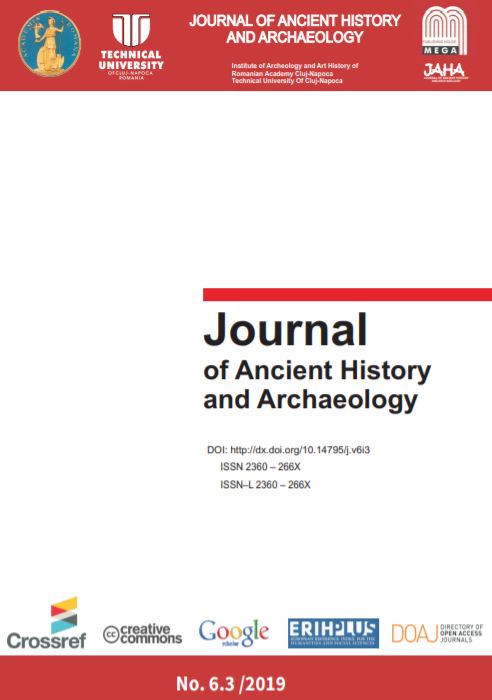NOTES ON A CLAY MOULD FOR BROOCH CASTING RECENTLY DISCOVERED FROM THE GREAT HUNGARIAN PLAIN
NOTES ON A CLAY MOULD FOR BROOCH CASTING RECENTLY DISCOVERED FROM THE GREAT HUNGARIAN PLAIN
Author(s): Vitalie BârcăSubject(s): History, Archaeology, Ancient World
Published by: Editura Mega Print SRL
Keywords: workshops; brooches; bronze; moulds; half-finished; the Sarmatians; the Vandals; Dacia; Przeworsk; Barbaricum;
Summary/Abstract: The object herein is the examination of the clay mould for brooch casting discovered in site 7 of Ecser (Hungary), investigated during May 2004 – June 2006 by rescue archaeological excavations performed prior to the construction of the express road M0, a bypass of Budapest. The mould was found in feature 4180 linked to the 3rd century AD Sarmatian settlement. Based on the morphological analysis of the Ecser mould, the author notes it was used for making brooches type Almgren group VII, series I, the headknob variation, external chord and vertical catchplate and by no means a pattern for casting Roman brooches. The recent typological analysis of brooches of the type shows that the mould was used for making brooches type Cociș-Bârcă B2a1a1, mainly used between the last two decades of the 2nd century AD and mid 3rd century AD.The presence of the mould in the settlement at Ecser evidences the production of brooches of type Almgren group VII, series I, the headknob variation, external chord and vertical catchplate (B2a1a1) in territories inhabited by the Sarmatians in the Great Hungarian Plain, as well as an existing workshop for their making nearby.Based on the origin, diffusion area of these brooches and the workshops producing them, but also certain historical and archaeological realities, the author maintains that the making of such brooches in the settlement at Ecser must be ascribed rather to an artisan arriving to the territory inhabited by the Sarmatian Iazyges or in connection with the Germanic world.The frequent presence of brooches of the type beside other brooch types and Germanic artefact categories evidence contacts and cultural and economic interferences between various populations, but it also very clearly establishes the movement direction of certain groups of Germanic populaces starting with the last quarter of the 2nd century AD
Journal: Journal of Ancient History and Archaeology
- Issue Year: 6/2019
- Issue No: 3
- Page Range: 119-133
- Page Count: 15
- Language: English

